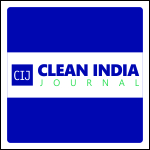The global production of plastic reached 300 million tonnes in 2015 with the packaging industry using nearly 80 million tonnes of polyethylene, the most common plastic. By 2018, production is expected to scale up to 100 million tonnes. Annually, five trillion polyethylene shopping bags discarded after use dot the landscapes without degradation.
The wax moth caterpillars can digest the polyethylene, the toughest plastic variety, has come as a long-awaited solution to degrade the stuff. This was an accident finding by Federica Bertocchini, a molecular biologist from the University of Cantabria, Spain. When she cleaned her honey comb panels, Bertocchini threw the caterpillars into a shopping bag and sealed it. When she returned a few hours later, she found the larvae everywhere. The bag was full of holes. The caterpillars had eaten their way out of it.
To find out how the process actually happens, Bertocchini and her team quashed the moths and laid them out on plastic bags. The surface was corroded in 14 hours. The caterpillars, therefore have some substance in their saliva or gut to facilitate this. The next step is to detect, isolate and produce this enzyme in vitro on an industrial scale.


































